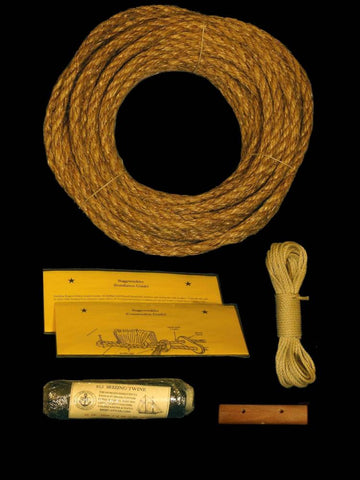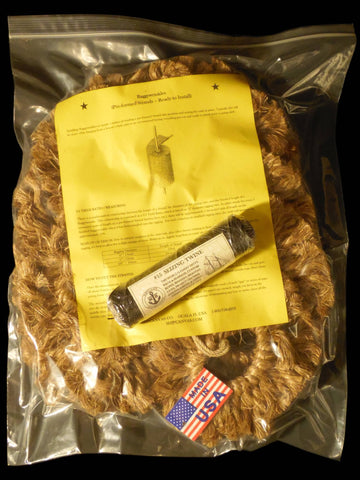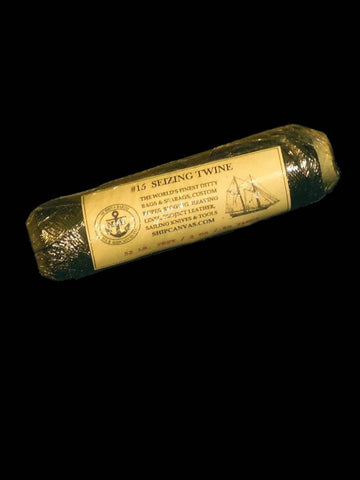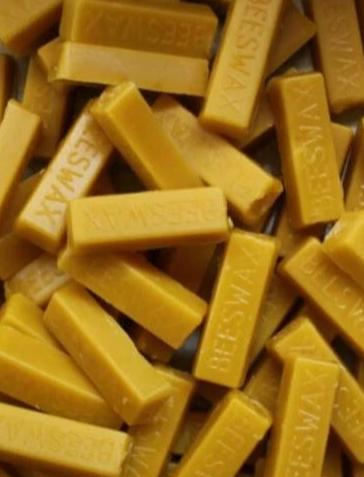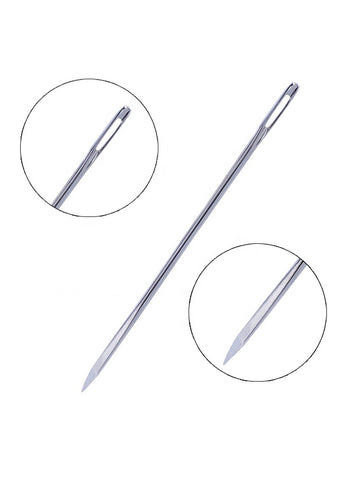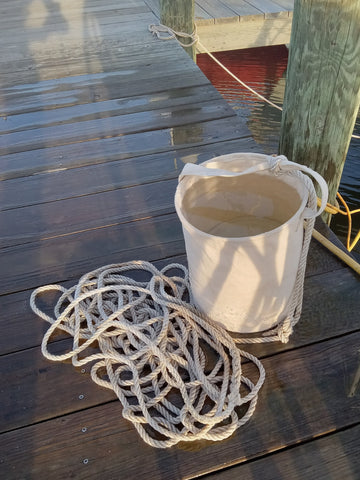Baggywrinkles

A Baggywrinkle begins life as a woven "sinnet" which is shown here in a loose coil.
Installation is simply a matter of winding it into the rigging and seizing off the ends.
Traditional Chafe Protection for Sails & Rigging
A Baggywrinkle consists of a woven "sinnet" which is wrapped in a tight spiral to form a cylinder-shaped "bristle brush" in the rigging. On traditional sailing vessels it's common to have multiple sets of baggywrinkles all throughout the standing and running rigging... anywhere that a sail might otherwise rub against wire, seizings, blocks, ratlines, etc.
Today's offshore cruising vessels will sometimes use a few sets of baggywrinkles too, because in many cases they provide better sail protection aloft than store-bought alternatives like spreader boots, shroud rollers or multiple layers of rigging tape. On a modern rig, they are sometimes installed at the spreaders and aft lower shrouds to prevent mainsail chafe on a broad reach or dead run. Cutter rigged vessels might install them on standing backstays.
OK... but why use Manilla Rope?
In theory, baggywrinkles could be made out of most any rope (nylon, dacron...). But ask any 'old-timer' and he'll explain that baggywrinkles aren't supposed to be droopy or soft, or else they'll get pushed flat by the sail... which is self-defeating and greatly reduces the level of protection. So what normally makes a good handling rope for its soft handling and flexibility is the exact opposite of what makes a good baggywrinkle.
Relative to other rope fibers, manilla is actually quite stiff. And in fact for the same reasons that we'd never use manilla rope for sheets or halyards, the stiff and 'bristly' characteristics of treated manilla are what make it uniquely superior for baggywrinkles. Another important benefit is that manila doesn't absorb water like nylon or dacron, and so the manilla baggywrinkles won't create as much weight aloft in wet, foul weather.

